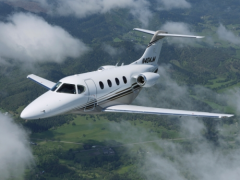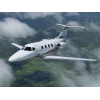High Altitude Training and endorsements are recommended for any pilot operating high performance single engine aircraft and all light to medium twins.
All pilots operating turbo-prop or turbo jet powered aircraft capable of operation at or above flight level 250 are required to have High Altitude Training.
With the increase in performance and ability to travel further and faster, pilots are exposed to greater potential cockpit stresses. High altitude operations coupled with night operations and inclement weather conditions add to the demands placed upon pilots and flight crews.
Gateway Flight Training LLC includes a review of high altitude flight considerations with all initial and recurrent training programs.
Initial High Altitude Training is conducted as a separate training program and may be conducted in conjunction with any initial or recurrent training program.
HIGH ALTITUDE TRAINING PROGRAM OVERVIEW
AC61-107A / CFR§61.31(g)(1)
Pilots and crew members participating in High Altitude Training should be versed in the operational characteristics and operation of high performance aircraft. This training modules success is dependent upon pilots and crew havin a thorough grasp of the operation of aircraft pressurization systems. Pilots and Crew Members should also possess an understanding of human physiology and high altitude conditions affecting flight. Completion of the Gateway High Performance Transition program is highly recommended.
Training Components:
TERMS and VOCABULARY
HIGH ALTITUDE ENVIRonMENT
14CFR§91.211 SUPPLEMENTAL OXYGEN REQUIREMENTS
WEATHER
FLIGHT PLANNING/NAVIGATION
PHYSIOLOGY
TURBOCHARGERS
OXYGEN EQUIPMENT
PRESSURIZATION SYSTEMS »EXPLOSIVE DECOMPRESSION »EMERGENCIES
SYSTEM CHECKS
SYSTEM MALFUNCTIONS
DIFFERENTIAL PRESSURE
TIME OF USEFUL ConCIOUSNESS






